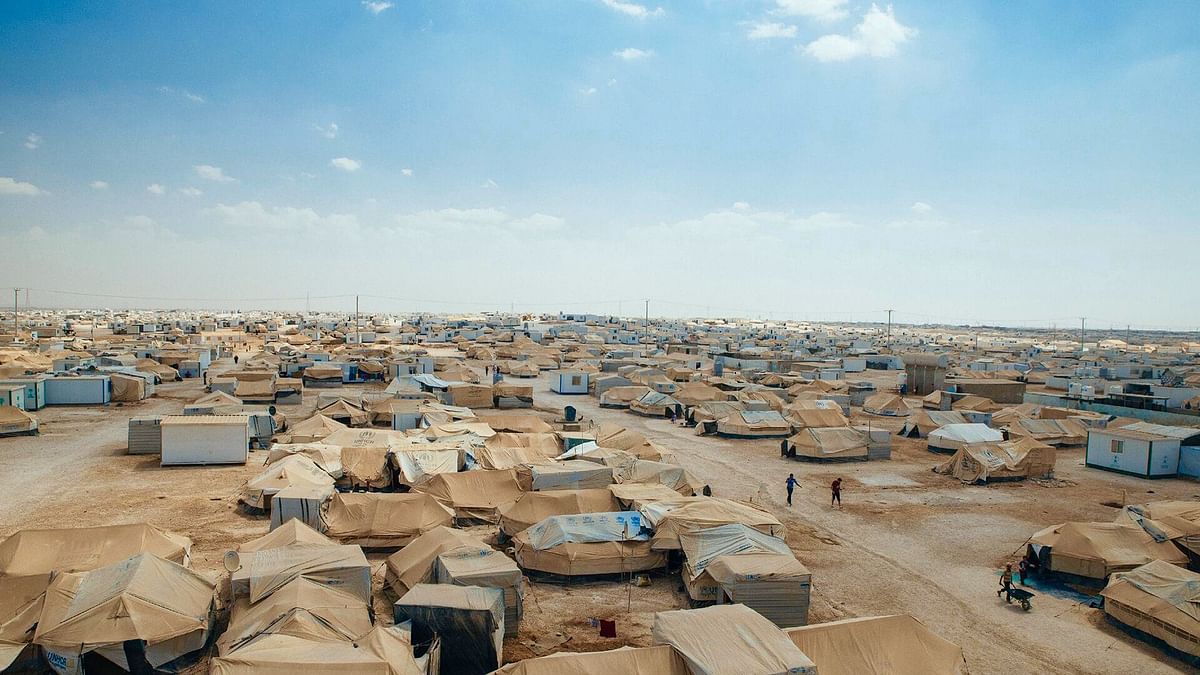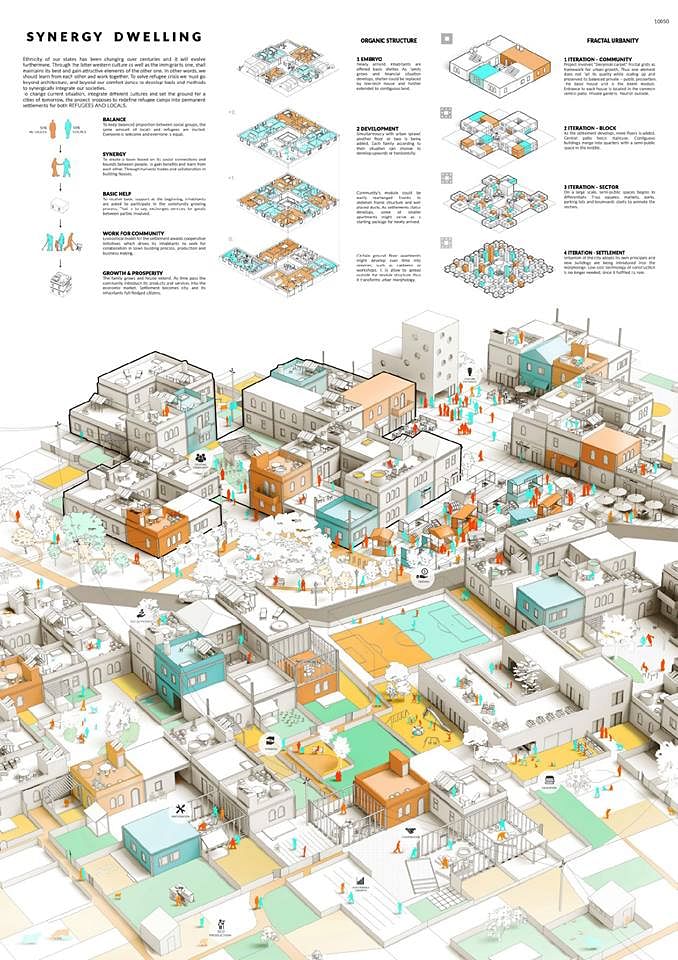Project Earth 2 announces winners of the Cities of Tomorrow competition
By Katherine Guimapang|
Tuesday, Oct 23, 2018

Related
After 3 months of submissions and project reviews, the jury for Project Earth 2's Cities of Tomorrow competition has announced its winners.
With the competition focusing on refugees and refugee camps, Project Earth 2 proposed a different approach towards these camps and their inhabitants. Participants were encouraged to consider refugee camps as an instrument and opportunity to activate deserted areas of Europe. The goal was to design refugee camps as places that could adapt, grow, develop, and change. Solutions created by participants will be delivered to organizations and NGOs working on-site, aiming at implementing them.
View the winners and their featured projects below.

1st Place: WEAVING COMMUNITIES: Transitioning an Existing Refugee Camp into an Integrated
Community
Situated on the outskirts of two larger cities, Athens an Piraeus, the existing Schisto
Refugee Camp is nestled in the middle of an industrial park close to nowhere. Every week,
there is currently a market that sets up on the periphery of the camp. By integrating a
marketplace as the main program of the site, which basically already exists on the exterior, the
camp potentially attracts vendors from neighboring communities of Attica. Following the
narrative of the weekly bazaar as a source of income and a way of life, the relationship between
the vendors and the refugees can become linked and mutually beneficial. By recognizing that
refugees are arriving with their own set of skills and sense of livelihood, we are empowering
them by providing resources and restoring their sense of dignity by allowing them to help
themselves rather than have them solely relying on outside aid. Both the refugees and the
locals can participate in a beneficial cultural exchange to deepen mutual understanding.

2nd Place: Weaving Lost Identities
The project aims to explore the reclamation of post-industrial landscapes into resettlement colonies by grafting them within environmental concerns, and developing new forms of urban centers. It re-frames refugee settlements as a beneficial model for host communities by combining refugee resettlement funds, subsidies and research funds for redevelopment of former mining landscapes. [...] On arrival refugees would be resettled into plots allotted to each family, allowing them to construct their own abodes within the given framework, as opposed to imposed camp structures. The building units are self-constructed Lego models built of fly-ash bricks derived from mining waste. The production of which consumes 81% less energy and produces 84% less CO2.

3rd Place: REDUCE, REUSE, RECYCLE, REGENERATE, REFORMAT
To allocate the compromise to comply with the Spanish refugee quote, a win - win strategy has
to be established to respond to the refugees and the host community’s needs.
REDUCING time and costs of the emergency by REUSING existing and abandoned
infrastructures & structures. RECYCLING the emergency temporary housing construction as the
final solution for the sustainable integral neighborhood. These areas will be REGENERATED
in new mixed use urban fabrics, where multiple actors may develop them in prosperous places.
Refugees are the potential. When needed, the Government will have to invest to REFORMAT
refugee’s skills to increase their self-reliance and work opportunities. The investment will revert
in the whole society.

3rd Place: REMINISCING THE BORDERLESS
To counter the tension issues between the locals and the refugees, the new city is designed
with the injection of the 'Sense of Nostalgia'. It is a concept where it could give the Syrians
the sense of belonging and at the same time provides a medium for integration between the
Turkish and the Syrians. The city development is divided into 4 major phases with point 'X'
as indicated in the site plan as the first development phase where administration and basic
facilities will be constructed for the new refugees. [...] The modules are another major anchor point of the city design. It consists of 3 types and
the size varies according to the number of families. The design of the modules is also made
less compact with the insertion of different typologies such as personal courtyard, central
livestock and urban food jungle to create the sense of nostalgia and promote social
interaction and healthy lifestyle.

Honorable Mentions:
- Synergy Dwelling: Anna Otlik | Karol Mądrecki | Artur Nitribitt
- Reviviscence: Bouvier Baptiste | Beuvelet Eliott | Jacques-Sermet Thibaut
- S.E.E.E.D Cities: Jason Olsen
- Public Space Toolkit: Isabel Bravo | Lidia Fernández | Belen Gesto | Julia Otaño | Adela Salas | Daniel Tobalina
- Permanent Temporality: Alejandro Rubio Cebrián | Adrian Andrés Belmonte
- The Intermediate Network: Sebastian Trujillo | Kruti Shah
- Rhizome City: Fiamma Ficcadenti | Federico Caserta | Francesco Casini | Gianmarco Lucarini
- Resettlement Plan for European Refugees: Li Jiajia | Ai Huiying | Chen Jingkai | Zhang Yifei | Yang Fei | Ma Yaobao
- The Squatter Settlement: Alexandre Zein
- Stargate Melilla: Megat Khairur Rasyad Zulkhairi | Hairil Ridzwan Harmain | Akmal Husaini Azman | Izzati Rafhana Abitalhah | Haziqah Fatini Mohd Zulkafli | Puteri Mayang Bahjah Zaharin
RELATED COMPETITION Cities of Tomorrow

RELATED NEWS From aiding refugee camps to at-risk riverfront communities, here are the winning Dencity 2017 proposals

RELATED NEWS The “Folkets House” in Malmö will be an Opportunity Space for job-seeking refugees and longtime residents


Share
0 Comments
Comment as :